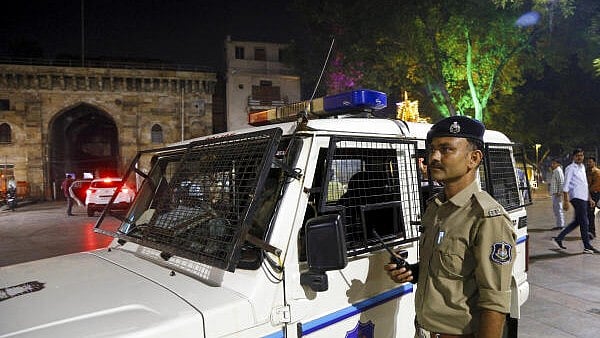
Red Fort is closed on Mondays.
Credit: PTI
New Delhi: The New Delhi blast on Monday that led to several deaths could have been even bigger had the Red Fort — a popular historic monument — not been closed on Monday.
Since the Red Fort is closed on Mondays, fewer tourists were in the area on the fatedyl day.
This area is always crowded on other days, said Sonu Singh, an auto-rickshaw driver.
People usually stroll here after visiting the Red Fort and eat at the stalls that sell popular street food, he added.
On Monday, the people at the spot were mostly those visiting the Chandini Chowk market for shopping.
Recalling the gut-wrenching scenes, Singh said, "We saw the body parts of two or three men.”
Irfan, another eyewitness, said the scene was horrific. "We saw severed hands and fingers. Handcart pullers and taxi drivers were caught in the blast. Some of them didn't survive," he said.
The blast spot is close to several other popular tourist places, like Raj Ghat and Jamia Masjid. Several popular markets are located nearby, selling wares including dry fruits and spectacles.
Monday's explosion brought back memories of Delhi's dark days, when its historic markets, monuments and public spaces found themselves on the frontlines of violence, each incident etching deep scars in its collective memory.
The summer of 1996 was one of the darkest chapters, when a powerful bomb ripped through the Lajpat Nagar market — one of the national capital's busiest shopping hubs — killing 13 people and injuring dozens.
A year later, a chain of explosions rocked multiple parts of the city, from Sadar Bazaar and Karol Bagh to Rani Bagh, Chandni Chowk, and even a moving bus in Punjabi Bagh.
The blasts struck at the city's heart — its markets and streets — where daily life carried on amid growing unease.
In December 2000, a terror group opened fire inside the fort complex, killing two people.
Barely a year later, the Parliament attack of December 2001 once again placed Delhi at the centre of terror, claiming the lives of nine security personnel and staff members.
The years that followed brought more pain. In 2005, a series of coordinated explosions just two days before Diwali tore through Paharganj, Sarojini Nagar, and a DTC bus in Govindpuri, killing over 67 people and injuring more than 200.
The festive spirit was replaced by fear: The blasts struck the heart of the capital's markets.
Three years later, in 2008, five near-simultaneous explosions hit Connaught Place, Karol Bagh, and Greater Kailash, killing over 20 people and injuring dozens.
The last major terror strike before Monday's incident was in 2011, when a briefcase bomb exploded outside the Delhi High Court, leaving 15 dead and 79 injured.
